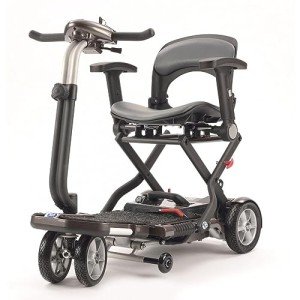Why Is It So Useful? For COVID-19

Understanding Mobility Aids: Enhancing Independence and Quality of Life
As society continues to age and individuals progressively look for ways to maintain independence, the demand for mobility aids has actually never ever been more essential. Mobility aids, which incorporate a range of devices created to help people with walking or moving, play an essential role in promoting mobility, enhancing security, and enhancing total lifestyle. This article will check out the various kinds of mobility aids, their advantages, factors to consider for choice, and answer some regularly asked questions.
Types of Mobility Aids
Different mobility aids are offered, each developed to deal with particular needs. The following table sums up a few of the most common kinds of mobility aids and their functions.
| Kind Of Mobility Aid | Description | Best Suited For | Key Features |
|---|---|---|---|
| Canes | A handheld stick offering support and balance. | People who require very little support. | Light-weight, portable, adjustable height. |
| Walkers | Four-legged frames offering stability. | Those requiring substantial support while walking. | Foldable, some with wheels, added safety features. |
| Rollators | Wheeled walkers with a seat for resting. | Individuals needing mobility with the choice to rest. | Brakes, baskets for individual products, adjustable height. |
| Wheelchairs | Chairs with wheels for individuals with restricted mobility. | Those unable to stroll or needing comprehensive assistance. | Manual or powered alternatives, customizable seating. |
| Scooters | Motorized devices for larger distances. | Individuals with minimal endurance however requiring self-reliance. | Different sizes and designs, typically easily transportable. |
| Crutches | Assistance devices put under the arms or lower arms. | Individuals recuperating from lower limb injuries. | Adjustable, lightweight, needs upper body strength. |
| Stairlifts | Mechanical devices for moving between floors. | Users dealing with obstacles in multi-level homes. | Adjustable for different staircases, automated. |
Benefits of Mobility Aids
Mobility aids provide a range of benefits that can significantly enhance the lives of individuals facing mobility obstacles. Some noteworthy advantages include:
- Increased Independence: Mobility aids empower people to move easily without relying on others for support, consequently enhancing their self-confidence and self-confidence.
- Boosted Safety: Using mobility aids can lower the risk of falls and injuries, especially for older adults or those with balance problems.
- Improved Quality of Life: By assisting in mobility, individuals can participate in social activities, participate in occasions, and take pleasure in life more fully, adding to better psychological and mental health.
- Rehab Support: After surgical treatment or injury, mobility aids offer needed support and stability, assisting in recovery and rehab processes.
- Accessibility: Many mobility aids are developed to be used both indoors and outdoors, guaranteeing that individuals can navigate various environments with ease.
Elements to Consider When Choosing Mobility Aids
Selecting the proper mobility aid needs careful factor to consider of numerous factors, including:
| Factor | Factors to consider |
|---|---|
| User's Needs | Examine the level of mobility needed; think about whether the user needs temporary or long-lasting help. |
| Physical Limitations | Evaluate the user's strength, balance, and coordination to determine the best type of aid. |
| Setting | Think about the main environments where the aid will be used, such as home, outdoors, or particular terrains. |
| Weight and Portability | Make sure that the picked gadget is workable relating to mobility and storage, specifically for outside use. |
| Budget plan | Mobility aids been available in a series of costs; think about insurance coverage and offered financing choices. |
| Adjustability | Pick aids that can be adjusted for height and comfort to accommodate development or changing needs. |
Often Asked Questions About Mobility Aids
1. How do I know if I require a mobility aid?
Lots of aspects can signal the need for a mobility aid, such as trouble strolling or stabilizing, fatigue while standing, or a current surgery impacting mobility. Consulting with a health care professional can provide assistance tailored to private needs.
2. What kinds of mobility aids are covered by insurance coverage?
Coverage varies in between insurance companies, however many supply options for resilient medical devices, which typically includes wheelchairs, walkers, and some kinds of walking sticks. Talk to your insurance coverage service provider for specific coverage details.
3. Can mobility aids be used outdoors?
Yes, lots of modern-day mobility aids are created for outdoor usage. you could try these out , scooters, and some walkers are geared up with functions for stability and ease of usage on different surface.
4. How do I maintain my mobility help?
Routine upkeep involves inspecting for any wear and tear, guaranteeing that parts such as wheels, brakes, and frames are functioning correctly, and cleaning the devices as needed. Following the manufacturer's guidelines is crucial for safety.
5. Is there a danger of ending up being reliant on mobility aids?
While some users might end up being reliant on mobility aids, they are designed to promote self-reliance and mobility. Gradually utilizing a mobility aid can enhance self-confidence and help retain physical strength and coordination.
Mobility aids are important tools that empower people to conquer physical challenges, promoting independence and improving quality of life. By comprehending the different types of mobility aids offered, their advantages, and essential aspects for factor to consider, households and caregivers can make informed decisions that best fulfill the needs of their enjoyed ones. With the best assistance, those with mobility challenges can lead satisfying and active lives, totally free to explore the world around them.

